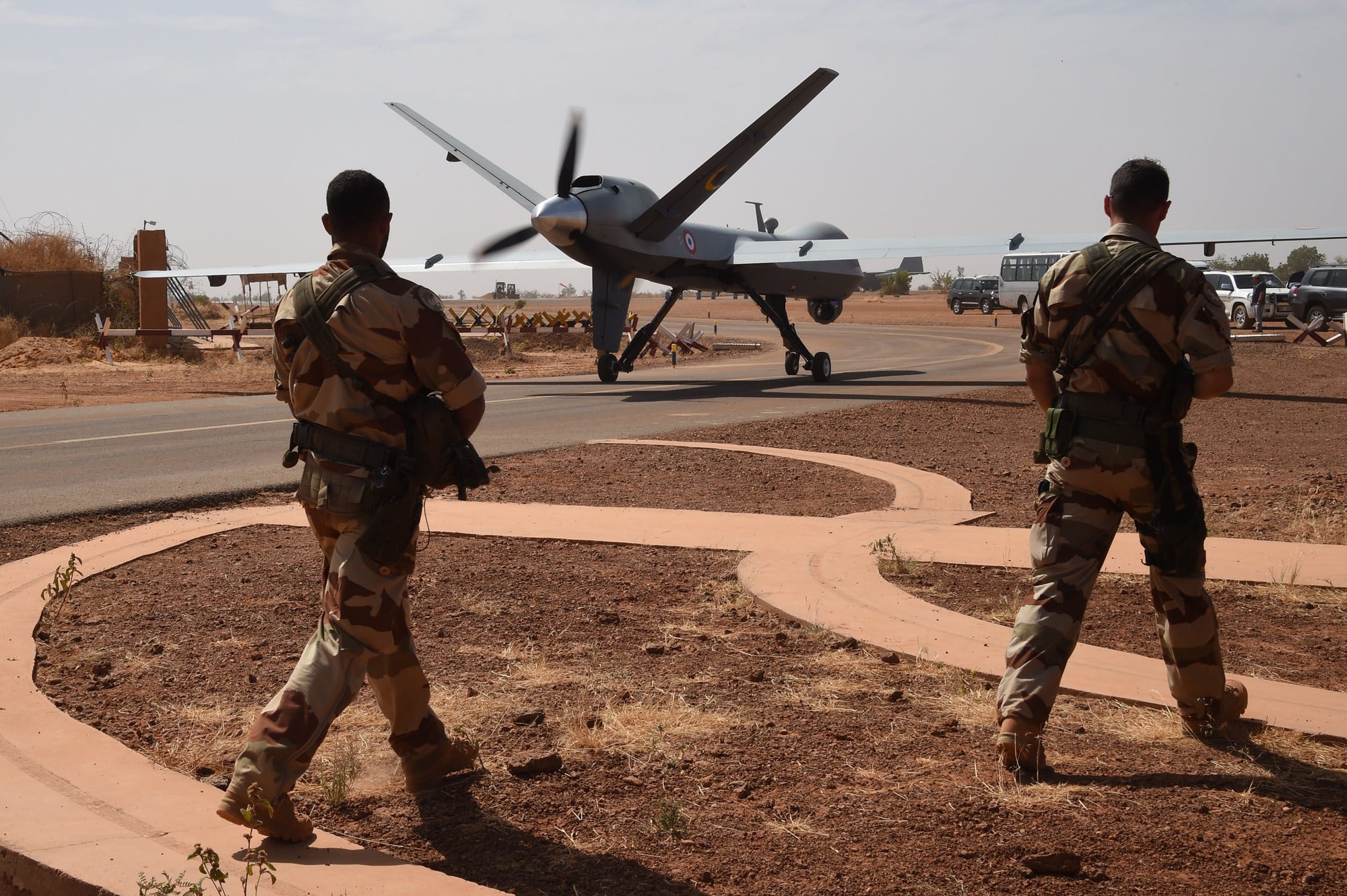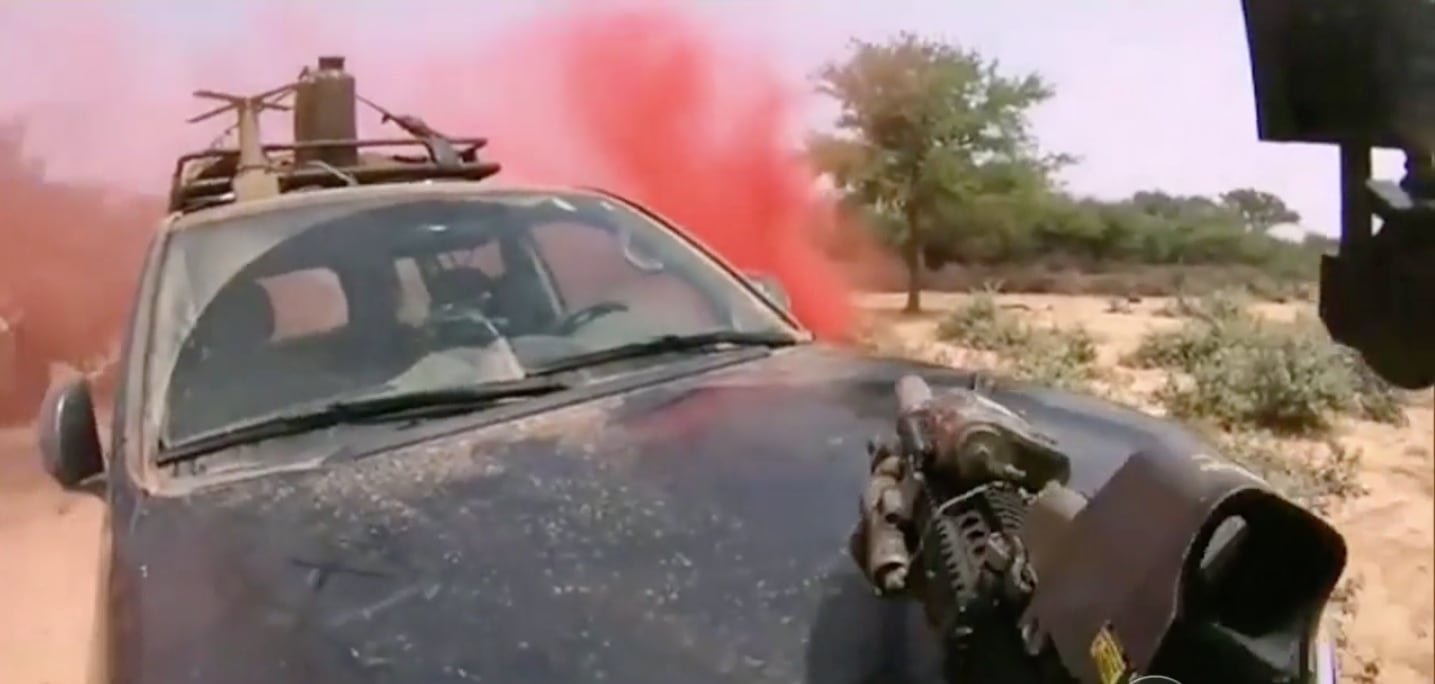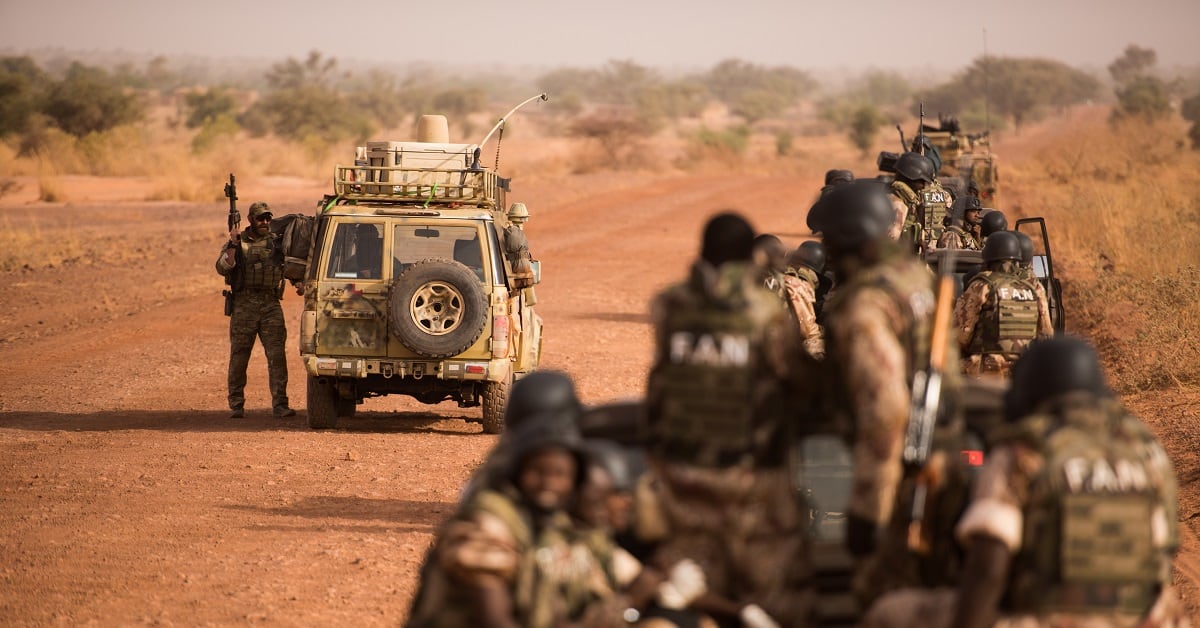When U.S. soldiers in Niger became involved in a firefight Oct. 4 with local militants, it took an hour and a half for the first unarmed American aircraft to arrive overhead.
The U.S. aircraft that arrived over the battlefield, near the village of Tongo Tongo, on the southwest border with Mali, wasn’t a strike platform or a medical evacuation helicopter, but instead an intelligence, surveillance and reconnaissance drone. Two French Mirage fighter jets arrived shortly afterward.
The French aircraft conducted four show-of-force flyovers “right at treetop level … driving the enemy forces away,” said Army Maj. Gen. Roger Cloutier Jr., U.S. Africa Command’s chief of staff, who oversaw the investigation into the shortfalls leading to the ambush.
While the French jets saved the lives of the remaining U.S. and Nigerien soldiers, it was too late for Staff Sgts. Bryan Black, Jeremiah Johnson and Dustin Wright and Sgt. La David Johnson. Those four were killed during the engagement.
The Defense Department conducted an investigation into the ambush and briefed reporters at the Pentagon Thursday. One result of the inquiry is that forces operating in Niger will get more U.S. Air Force air cover, and the frequency of ground missions will decrease.
”I won’t go into details here, but we have increased the firepower, we’ve increased the ISR capacity and we’ve increased various response times,” said Marine Gen. Thomas Waldhauser, Africa Command’s top leader.

“And what this has done is it’s allowed these teams perhaps to not to do the tempo that they would like,” he added. “But it provides adequate and more resourceful force protection measures in order to still keep up with the enemy forces on the ground. So we have beefed up a lot of things posture wise with regard to these forces.”
The Niger mission originally did have ISR drone coverage. But before December, Nigerien officials were not allowing U.S. drones to fly with armed warheads, even for defensive missions.
During the October mission, the team was participating in a capture or kill operation against a high-value militant leader named Dondou Chefou. The reconnaissance drone had been “soaking” the village where he was thought to be for roughly six hours.
“They determined that the site was cold,” Waldhauser said. But that site wasn’t where the battle took place.
After determining Chefou was not at the objective, the team tasked their drone to head north and watch crossing points on Niger’s nearby border with Mali.
The troops then began to leave the area, but stopped on their way back at the village of Tongo Tongo, where they replenished their water supply and held an impromptu meeting with village elders.
Had there still been a drone providing over-watch for the team, they may have been forewarned about the enemy ambush that had staged along their departure route — a force outnumbering the U.S. and Nigerien soldiers three to one.
RELATED

Since the incident, Pentagon leadership has limited special operations missions that could result in enemy contact. Missions need a “strategic value” and must target groups that pose a “strategic threat“ to the United States, according to Waldhauser.
But even as ground missions shrink, air assets in the region are expected to continue growing.
The combination of scaled back ground operations and bulked up air cover will, it is hoped, ensure missions that do get approved in the future are properly resourced.
“The majority of DoD personnel in Niger are supporting air operations at the airfield in Niamey, or at an airfield in Agadez,” which is still under construction, said Robert Karem, the assistant defense secretary for international security affairs. “The establishment of the Agadez airfield will help provide additional ISR coverage in the region.”
Air Force officials have described the construction of Niger Air Base 201, on the edge of the Sahara Desert, as the largest US troop labor construction project in history.
MQ-9 Reapers, operated by the Air Force’s 323rd Expeditionary Reconnaissance Squadron, are reportedly already flying out of the base in Agadez, but eventually, the entire drone operation in Niamey will move there. They are expected to target several different al-Qaida and Islamic State group-affiliated fighters in countries throughout the Sahel, a sprawling region just south of the Sahara, including the area around Lake Chad, where Nigeria’s Boko Haram insurgency has spread.
Three hangars and the first layers of a runway have been completed at Niger Air Base 201, which is expected to be fully functional early next year. The base will eventually also house fighter jets. The drones, with surveillance and added striking capabilities, will have a range enabling them to reach a number of West and North African countries.
The Associated Press contributed to this report.
Kyle Rempfer was an editor and reporter who has covered combat operations, criminal cases, foreign military assistance and training accidents. Before entering journalism, Kyle served in U.S. Air Force Special Tactics and deployed in 2014 to Paktika Province, Afghanistan, and Baghdad, Iraq.





